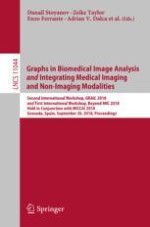2018 | Book
Graphs in Biomedical Image Analysis and Integrating Medical Imaging and Non-Imaging Modalities
Second International Workshop, GRAIL 2018 and First International Workshop, Beyond MIC 2018, Held in Conjunction with MICCAI 2018, Granada, Spain, September 20, 2018, Proceedings
Editors: Danail Stoyanov, Zeike Taylor, Enzo Ferrante, Adrian V. Dalca, Anne Martel, Lena Maier-Hein, Sarah Parisot, Aristeidis Sotiras, Bartlomiej Papiez, Mert R. Sabuncu, Li Shen
Publisher: Springer International Publishing
Book Series : Lecture Notes in Computer Science
